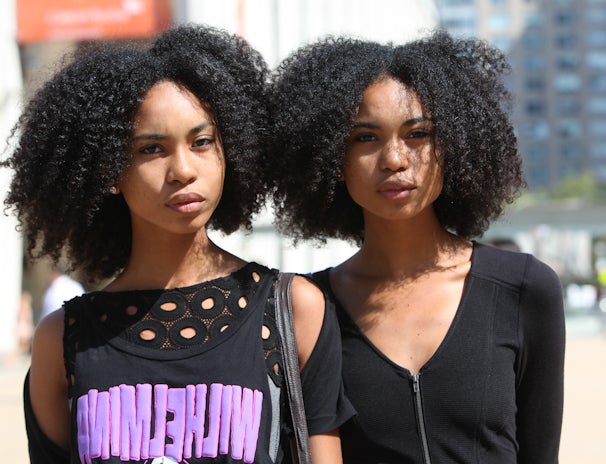
I was 9 years old the first time I had my hair straightened at Naomi’s House of Elegance, a tiny storefront with oversized chairs and powder blue chiffon curtains. I was so excited to finally have my hair “come of age” that I barely noticed the distinctive smell of burnt hair and sulfur when I walked in or the large hot comb burn on my scalp when I walked out.
My hair moved in ways it never had before, my aunties cooed at how precious I looked, and that affirmation fueled a regular ritual of straightening and relaxing for the next 35 years.
For the same 35 years, I have been an unapologetic lover of black people and black culture, a student of black movements and struggle, and a racial and gender justice activist. Professionally, I lecture on implicit bias, racial stereotyping, media distortion, and the normalization of white beauty standards to explain the racial paradox: the idea that we can simultaneously value racial equity consciously while unconsciously contributing to racial disparity. I engage and challenge our content and image creators to offer not just positive representations of black men and women, but rather meaningful, complicated, and nuanced depictions that illustrate the multiple ways black people show up in the world. At my core, I am fighting for justice and liberation.
(Johnson as a child)
And yet with respect to my hair, the very race conscious values I hold have not translated to a shift in my hair straightening regimen. As the natural hair movement has grown, I have celebrated the affirming young women who are pushing hair boundaries but at the age of 44, amidst an unplanned hair transition, I find myself confronting my own hair paradox. Having let go of chemical processing, embracing the real texture of my hair seems to require something more – challenging the deeply embedded “hair-eotypes” I have about my hair.
Hair expression is, of course, personal. The styling options available to black women are plentiful – driven largely by our own innovations and entrepreneurship and a strong desire to showcase our beauty as we see it. Our hair, as one of my friends likes to say, is really an “accessory” – we can go curly, straight, short, long, or blond all on a whim and within a week’s time. But for every black woman empowered to switch it up when it comes to her hair, there are countless stories like our colleague, a judge, whose recent natural hair transition makes her worry whether her robe will be enough to command the respect of those on the other side of her bench. Put simply, that we celebrate and recognize the diversity of hair choices does not mean that we have achieved an equal or genuine acceptance of all or even our own hair.
(Johnson, Executive Director at the Perception Institute)
Everyday we receive subtle and not-so-subtle messages about our hair – associations that our brains categorize into what’s good, bad, appropriate, or professional. Over time, these associations form hair hierarchies, if you will. I’ve come to expect Kerry Washington’s perfectly coifed “gladiator” helmet but my brain literally blinked when Viola Davis pulled off her wig off.
Subscribe to our daily newsletter for the latest in hair, beauty, style and celebrity news.
Last Spring, SheaMoisture launched the provocative “Break the Walls” campaign to spotlight the ways in which aisle segregation of hair products by race reinforces biases about beauty. Their goal was to drive conversations not just about the literal walls the beauty industry erects between hair communities but to challenge all of us to confront the “mental walls” that reinforce hair hierarchy – the cues we take in daily that form the basis of bias.
Moved by that challenge and supported by SheaMoisture’s beauty expertise, Perception Institute designed the “Good Hair” Study to explore how hair and beauty standards within image-driven industries – beauty, advertising, fashion, and Hollywood – affect perceptions of black women whose hairstyles fall outside of the dominant norm. The cornerstone of the 4000+ participant study is the Hair Implicit Association Test, a metric developed to measure the quick, implicit, often unconscious, negative judgments we make about natural, textured hair.
For most black women, the findings will not be surprising but, perhaps, will provide hard evidence and affirm what we’ve known for some time: bias against natural hair is real.
Generationally, however, there is reason for celebration. Young black women with natural styles have more positive implicit and explicit attitudes toward textured hair than other women. Not only are they rocking the look, they have found a way to build affirming and inclusive communities that reduce hair bias. As I continue to push daily against my own internal hair boundaries and biased media, I am happy to be led by my younger, beautiful, inspiring, empowering, naturalista sisters.
For more information on the Good Hair Study and to take the Hair IAT, please visit goodhairstudy.com.